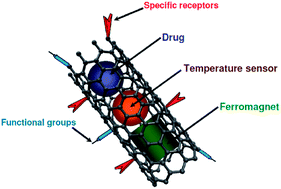Nanotechnology is providing exciting and new opportunities which are likely to revolutionize future clinical practice. The use of nanoparticles for biomedical applications is particularly exciting due to their huge potential for multi-modal approaches. This includes their use as drug delivery vectors, imaging contrast agents, hyperthermia systems and molecular targeting. Their ability to cross biological barriers, for example the blood brain barrier, makes them attractive for potential treatments in neurological disorders. There is also great hope that nanostructures will serve as platforms in future cancer therapies. Current cancer fighting strategies consist primarily of surgery, radiation therapy and chemotherapy. Each of these treatments is bound by a limit, known as the therapeutic window, which, if exceeded, causes undue harm to the patient. In the ongoing quest to improve our therapeutic arsenal, nanoparticles are emerging as exciting structures for a new generation of multi-modal therapeutics. Within this context, carbon nanostructures are amongst the leading contenders as building blocks to deliver multi-function drug delivery platforms. This review examines the various properties of carbon nanostructures that allow such multi-functionality. Recent advances on the development of novel approaches for functionalization, targeting and imaging via carbon nanostructures are discussed.

Nanotechnology is providing exciting and new opportunities which are likely to revolutionize future clinical practice. The use of nanoparticles for biomedical applications is particularly exciting due to their huge potential for multi-modal approaches. This includes their use as drug delivery vectors, imaging contrast agents, hyperthermia systems and molecular targeting. Their ability to cross biological barriers, for example the blood brain barrier, makes them attractive for potential treatments in neurological disorders. There is also great hope that nanostructures will serve as platforms in future cancer therapies. Current cancer fighting strategies consist primarily of surgery, radiation therapy and chemotherapy. Each of these treatments is bound by a limit, known as the therapeutic window, which, if exceeded, causes undue harm to the patient. In the ongoing quest to improve our therapeutic arsenal, nanoparticles are emerging as exciting structures for a new generation of multi-modal therapeutics. Within this context, carbon nanostructures are amongst the leading contenders as building blocks to deliver multi-function drug delivery platforms. This review examines the various properties of carbon nanostructures that allow such multi-functionality. Recent advances on the development of novel approaches for functionalization, targeting and imaging via carbon nanostructures are discussed.
